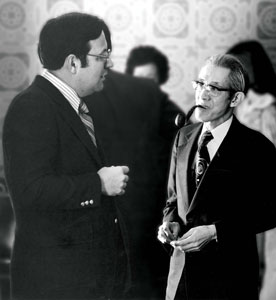Almost a college for Lisbon
To merge or not to merge, that was the question for several Iowa colleges. In 1915 Coe and Cornell discussed options for “a plan of union,” and Coe President John Marquis recommended the following options in a letter: (1) Locate the humanities at Mount Vernon and the science and technical courses with vocational leaning in Cedar Rapids. (2) Establish a high class preparatory school in one location and place the college in the other. (3) Arrange the curriculum so that the humanities and most of the academic branches could be taken in Mount Vernon the first two years of the course, and devote the remaining two years in Cedar Rapids to the scientific and technical subjects. (4) Separate the sexes, placing the girls’ college on the beautiful campus at Mount Vernon and the boys here, but all under one Board and one Faculty.

Between 1928 and 1934 Cornell and Upper Iowa University, also a Methodist institution, explored the possibility of merging, and in the 1970s Coe and Cornell again sought ways to cooperate. They instituted cross-registration and provided hourly transportation between campuses. Computer services merged. Plans also called for joint faculty appointments and library specializations. Cornell’s adoption, and Coe’s rejection, of the One Course At A Time plan ended these efforts.
Western College, founded by the Church of the United Brethren in Christ, opened in 1857 about three miles east of the present airport in Cedar Rapids. It proudly advertised that its students, under the direction of the school’s “department of manual labor,” cultivated farm crops to pay their tuition. The founders gambled and lost that the railroad would be routed nearby. Worse, area residents proved indifferent. Many were Czech-speaking Catholic immigrants not eager for their children to learn English in a Protestant school. During these years the rivalry between Lisbon and Mount Vernon focused on the perceived prestige that the latter accrued because it possessed a college. By 1875 Western College was for sale, and some Lisbonites began negotiating for the transfer of the college to Lisbon. After the deal collapsed, the trustees in 1881 found a new home for the school in Toledo, Iowa, where in 1906 Western changed its name to Leander Clark College. In 1919 it merged with Coe.
Westmar College in Le Mars was born in 1948 from the merger of York College (in Nebraska) with Western Union College (founded in Le Mars). Westmar merged in 1990 with Teikyo University of Japan to become Teikyo-Westmar University. The following year the Association of Independent Colleges and Universities, disapproving of the university’s foreign governance, denied the new entity membership. The school closed in 1997.
Parsons College in Fairfield, a Presbyterian school founded in 1875, lost its accreditation in 1967 as the result of scandalous mismanagement. Parsons closed in 1973, and the following year Maharishi International University took over its campus.
In February 1996 Mount Vernonites learned that Mellen University (no connection to Carnegie Mellon) intended to open a residential college in Mount Vernon, where six to 10 students would pursue a “Great Books” bachelor’s degree modeled after St. John’s College. When the proposed college failed to generate any enthusiasm in Mount Vernon, Mellen’s representative decided to locate the school in Lisbon. Nothing came of the venture, but Lisbon almost got a college.
